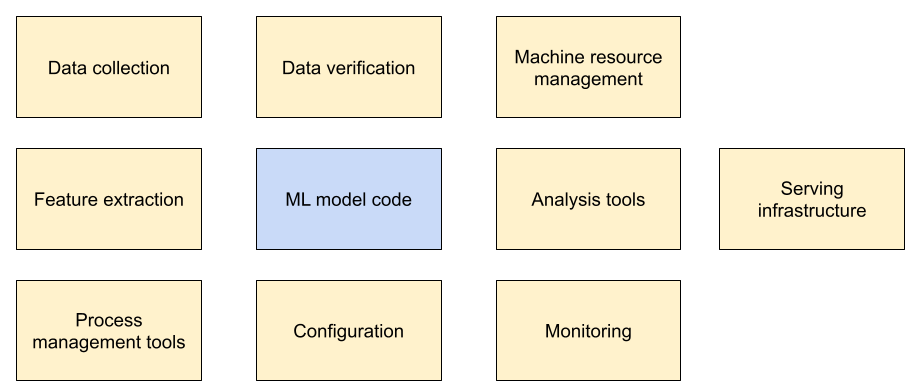Page Summary
-
This module explores the broader ecosystem of a production ML system, emphasizing that the model itself is only a small part of the overall system.
-
You will learn to choose the appropriate training and inference paradigms (static or dynamic) based on your specific needs.
-
The module covers key aspects of production ML systems, including testing, identifying potential flaws, and monitoring the system's components.
-
As a prerequisite, familiarity with foundational machine learning concepts, including linear regression, data types, and overfitting, is assumed.
-
Building upon previous modules, this content shifts focus to the practical aspects of deploying and maintaining ML models in real-world scenarios.
So far, this course has focused on building machine learning (ML) models. However, as Figure 1 suggests, real-world production ML systems are large ecosystems and the model is just a single, relatively small part.

At the heart of a real-world machine learning production system is the ML model code, but it often represents only 5% or less of the total codebase in the system. That's not a misprint; it's significantly less than you might expect. Notice that an ML production system devotes considerable resources to the input data: collecting it, verifying it, and extracting features from it.